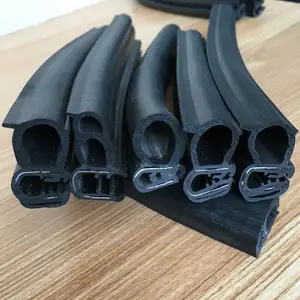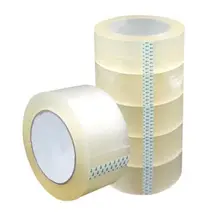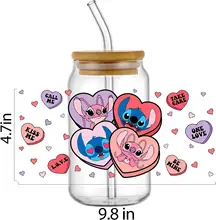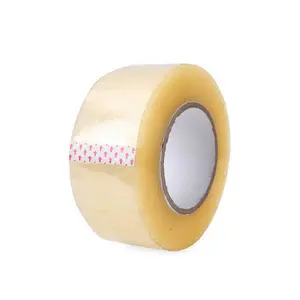Introduction
DIY projects offer a vast and exciting world, often requiring a diverse range of tools and materials. Among these, rubber adhesive tape emerges as a versatile and essential component. This adhesive tape, a blend of material and adhesive film, is used to bond or join objects together, eliminating the need for fasteners, screws, or welding. Its unique properties and benefits make it ideal for a broad range of applications, from packaging to crafting and even home decor. This article explores the intricacies of rubber adhesive tape, its types, properties, and uses in DIY projects, along with essential safety precautions to consider.
Understanding Rubber Adhesive Tape
Rubber adhesive tape is a type of adhesive tape that combines a material and an adhesive film to bond or join objects together. It simplifies manufacturing processes by eliminating the need for fasteners, screws, or welding. The tape consists of a backing or carrier, such as paper, plastic film, cloth, foam, foil, etc., coated with an adhesive. The adhesive-coated backing is then wound up to form a roll of tape. Each roll and its composition are unique and can be tailored to specific applications for a wide variety of bonding solutions.
Types of Rubber Adhesive Tape
Natural rubber adhesives are commonly used in carton sealing PVC tapes, and Polypropylene tapes. They bond well to a variety of materials including leather, fabrics, and paper. Polypropylene natural rubber adhesive tapes, also known as cold room tapes, can withstand temperatures between 0-150 degrees F. These tapes have good water resistance and are specifically made to adhere to recycled corrugated. They have a quiet unwind and make excellent packaging tape. Because rubber is non-conductive, electrical tapes often use a natural rubber adhesive. PVC tapes with rubber adhesives are a cost-effective choice, more durable than standard PolyPro tape, suitable for heavy-duty packing.
Properties and Benefits of Rubber Adhesive Tape
Rubber-based adhesives are made from either natural or synthetic rubber. They offer a high initial grab or tack, bonding well with various materials and surfaces. Ideal for low-temperature and indoor applications, they are vulnerable to UV light, high temperatures, moisture, and chemicals. Rubber adhesive films are used in medical applications, healthcare, and cosmetics, providing excellent adhesion in indoor areas with steady temperatures. They also feature an impressive amount of light-duty staying power. These adhesives are perfect for filling gaps in almost any material, including ceramics, glass, concrete, paper, elastomers, leather, textiles, metal, plastic, wood, porous surfaces, and composite materials.
Utilizing Rubber Adhesive Tape in DIY Projects
Duct tape, a type of rubber adhesive tape, is a versatile tool that can be used in a variety of DIY projects. From creating a unique corner bookmark to crafting a durable hammock, the possibilities are endless. You can even make a geodesic dome with bamboo poles and a plastic tarp, or a waterproof beach bag. For those who love crafts, a picture frame or a desk organizer made of duct tape can be an interesting project. Remember, the choice of duct tape print can add a personal touch to your creations.
Basic Techniques for Using Rubber Adhesive Tape
Rubber adhesive tape, also known as pressure-sensitive tape, is tacky at room temperature and adheres firmly to various surfaces with just the application of a finger or hand. It comes in single-sided and double-sided variants. Single-sided tapes allow bonding to a surface or joining of two adjacent or overlapping materials. Double-sided tape allows the joining of two items back-to-back. The tackiness of the adhesive tape is very temperature-dependent, and the colder the conditions, the poorer the bond will be. If you must work at lower temperatures, then use an adhesive tape specifically designed for colder climates.
Safety Precautions When Using Rubber Adhesive Tape
When using rubber adhesive tape, it's crucial to consider safety precautions. Exposure to adhesive materials can lead to skin irritation, especially if you're handling them with bare hands. It's recommended to use gloves to prevent direct contact. Additionally, the inhalation of adhesive fumes can cause respiratory issues. Ensure you're working in a well-ventilated area to minimize this risk. Always refer to the manufacturer's Material Safety Data Sheet (MSDS) for detailed information on handling, storage, and disposal of the adhesive tape. This document also provides information on potential health hazards and first aid procedures.
Inspiring DIY Projects Using Rubber Adhesive Tape
Rubber adhesive tape, often known as duct tape, can be used in a variety of creative DIY projects. From crafting a unique corner bookmark to creating a durable hammock, the possibilities are endless. You can even make a geodesic dome for housing plants or a waterproof beach bag. For those who love crafts, a picture frame or a desk organizer made of duct tape can be a fun project. These projects not only showcase the versatility of rubber adhesive tape but also inspire creativity and practical application in everyday life.
Home Decor Projects
Rubber adhesive tape can be a versatile tool in home decor projects. For instance, it can be used in creating a DIY Photo Wall, where 'Vacation Memories' can be beautifully displayed. The tape's strong adhesion ensures the photos stay in place. Similarly, it can be used in crafting a DIY Picture Case or a Photo Wind Chime, adding a personal touch to your decor. Moreover, the tape can be used in making unique vases, such as Plastic Bottle Flower Vases or Tetra Pak Wall Vases. The tape's flexibility and strength make it ideal for these projects.
Repair and Maintenance Projects
Rubber adhesive tape, particularly aluminum foil adhesive tape, is a versatile tool for various repair and maintenance tasks. It's used to seal against water, air, or dust, remaining permanently soft. For instance, it can patch up holes in screens, preventing bugs from entering. It's also useful for repairing holes in down jackets, preventing feathers from leaking. Moreover, it can be used to repair the edge tape on shelves that often cracks, chips, or peels off. Lastly, it's an excellent choice for ceiling repairs, particularly in applying drywall tape.
Craft and Art Projects
Rubber adhesive tape, similar to duct tape, can be used in a variety of craft and art projects. It's versatile, colorful, and easy to work with, making it a favorite among DIY enthusiasts. From making wallets and backpack charms to fashion rings and home decor, the possibilities are endless. This tape can be used to create unique and personalized items, encouraging creativity and imagination. It's not just for repairs; it's a tool for artistic expression. Remember, the key to a successful project is to let your creativity flow and have fun with it.
Conclusion
Rubber adhesive tape, with its high initial grab or tack and impressive light-duty staying power, has proven to be a game-changer in the realm of DIY projects. Its versatility extends from home decor and craft projects to repair and maintenance tasks, demonstrating its wide-ranging applicability. However, while enjoying the creative process, it's crucial to remember the safety precautions associated with its use. From crafting a unique corner bookmark to creating a durable hammock, the possibilities with rubber adhesive tape are endless. It's not just a tool for repairs; it's a medium for artistic expression and practical application in everyday life. So, the next time you embark on a DIY project, consider the power of rubber adhesive tape.








































 浙公网安备 33010002000092号
浙公网安备 33010002000092号 浙B2-20120091-4
浙B2-20120091-4